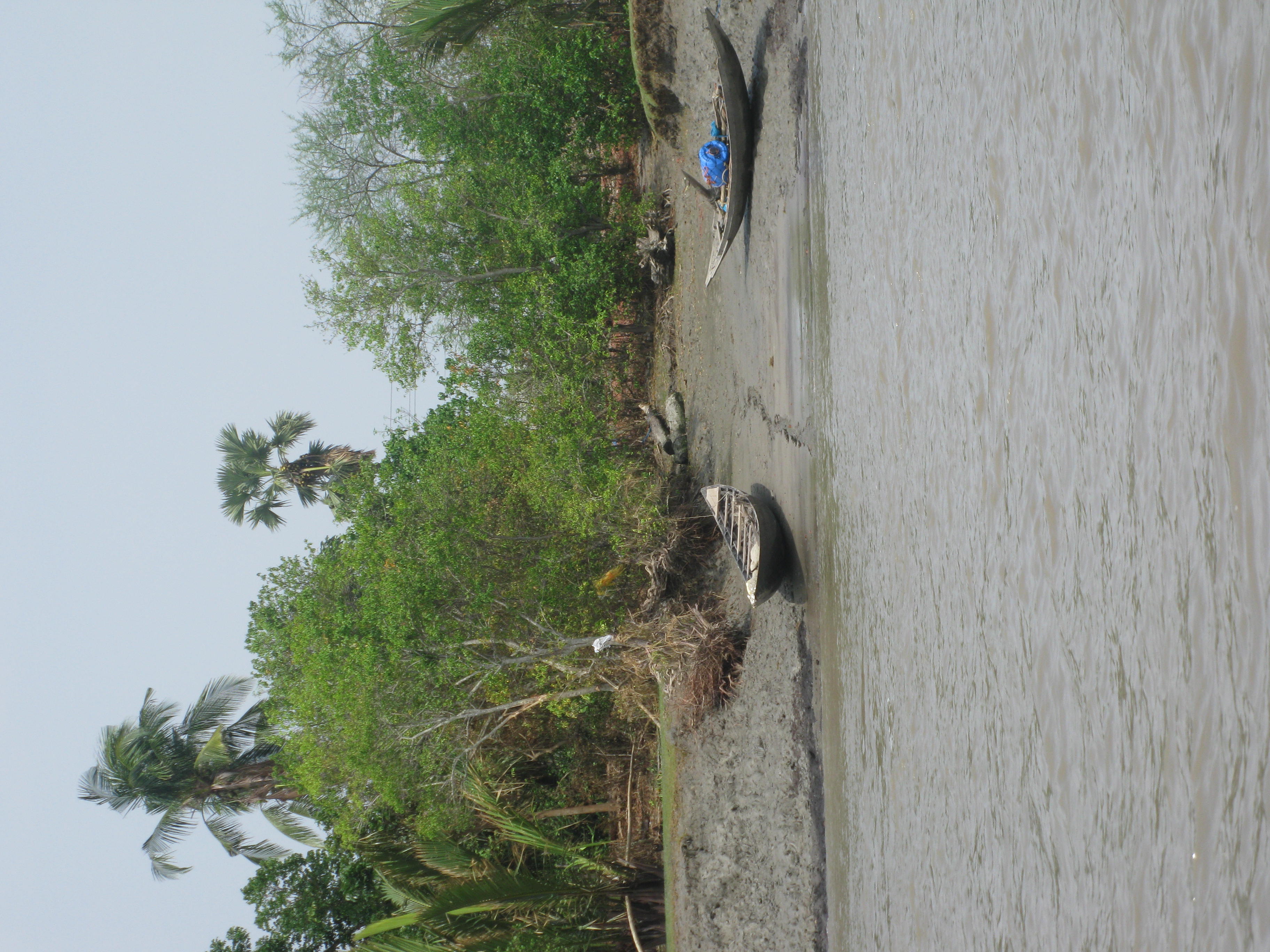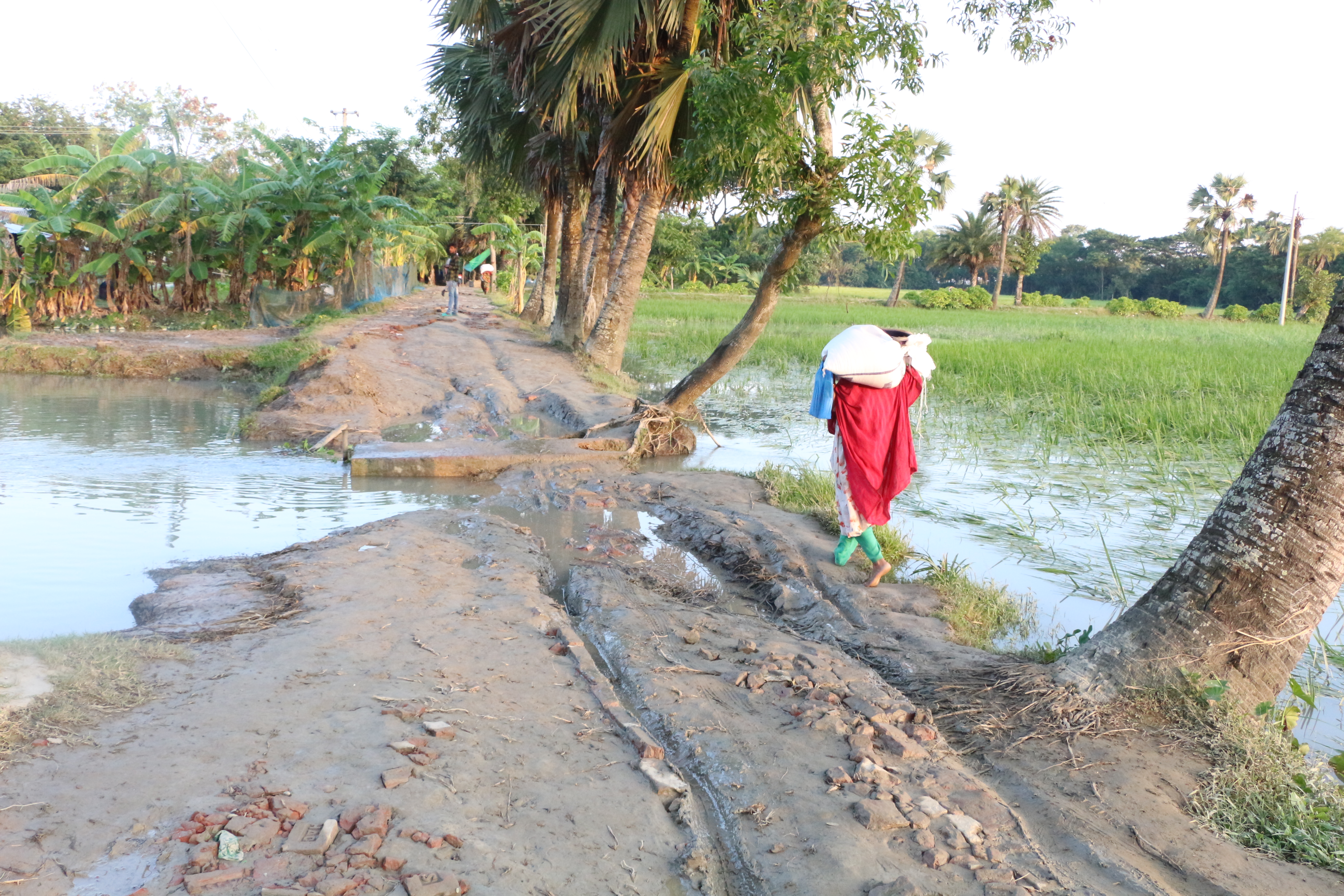

CoP27 in Sharm al Sheik will be known as the Loss and Damage CoP, following the historic agreement to create a Loss and Damage fund to compensate people in the south and developing countries suffering from loss and damage due to disasters. Thus, it is now imperative that the transitional committee moves and gets the ball rolling as it is meeting this March. Already, a major climate diplomacy breakthrough came in as UN adopts resolution for an advisory opinion on climate change in this meeting. Now due attention and actions need to be taken for the loss and damage fund. It should be a fund with a mechanism to respond urgently to the needs of those on the frontline of climate crisis. It needs to be a fund that works for the communities. Therefore, the funds need to come as grants and in no way loans!
Bangladesh is one of the most climate-vulnerable countries in the world. Its low-lying coastal landscape and heavily populated delta makes it highly susceptible to catastrophes, including floods, cyclones, and earthquakes, most of which are caused by human actions. In these disasters, it is the marginalised communities, both in urban and rural areas, who pay the highest toll.
In the coastal regions for instance, generation after generation, people have been living their lives within a vicious cycle of losing and rehabilitating and losing everything all over again. This loss surpasses economic damage and includes non-economic aspects, which, in most cases, are irreversible.

The climate change crisis is not gender neutral. Its impacts affect lives and livelihoods, disproportionately of women and girls, magnifying gender inequality globally. Women’s unequal participation in decision-making processes and the labour force prevents women from fully contributing to climate action. Young people are also hugely affected. We are therefore seeing young people to be at the forefront of social movements, seeking effective climate change actions and solutions towards achieving sustainable development. A strong reflection of it can be found in Bangladesh, where loss and damage has been a lived concept for years now.

The communities in the frontline along with the Government of Bangladesh and civil society organisations have been working to prevent and mitigate climate crisis impacts to the extent feasible in a country that is a LDC and a delta, home to 170 million people. The actions taken by the Government in disaster preparedness and mitigation have been hailed across the globe for some of its best practices. For example, under its Social Safety Net budget, the GoB has provided agricultural subsidies to affected farmers. It implemented a post-flood programme in 2007, providing USD 12.7 million in relief in the aftermath of two flooding events, as well as USD 4.6 million for recovery from Cyclone Sidr, and 2.9 million USD for ‘agricultural rehabilitation’.
The Government has also partnered with civil society organisations over the last few years in minimising the climate crisis. At COP27, the Government actively advocated for establishing a loss and damage fund for climate vulnerable countries, taking on the recommendations of civil society organisations, including ActionAid Bangladesh.
In 2016, a consortium of ActionAid Bangladesh, the International Centre for Climate Change and Development (ICCCAD), Care International, and Nature Conservation Management, undertook a scoping study on establishing a national mechanism for loss and damage, using their own resources collectively. This was submitted to the Director General of the Department of Disaster Management, under the GoB’s Ministry of Disaster Management and Relief (MoDMR), in which one of the components was setting nationally appropriate specific approaches to address Non-Economic Loss and Damage (NELD).
Bangladesh has made significant strides in developing strong disaster management and climate policy by leading the Climate Vulnerable Forum (CVF) and Vulnerable-20 (V-20) presidency (from 2020 to 2022).
The key policies related to climate change and its impacts are:
1. Bangladesh Climate Change Strategy and Action Plan (BCCSAP) - Outlines the country's strategy for reducing vulnerability to climate change
2. Bangladesh Delta Plan 2100 - Focuses on developing a comprehensive plan for the sustainable development of the delta region
3. Climate Change Gender Action Plan (ccGAP) and National Adaptation Plan (NAP) for Bangladesh - Prioritizes specific adaptation with a focus on gender perspective
4. Bangladesh Disaster Management Act - Outlines the legal framework for disaster risk reduction and management
5. Bangladesh Climate Change Trust Fund (BCCTF) and Bangladesh Climate Change Resilience Fund (BCCRF) - Provides financial support for climate change adaptation projects
There are several other policies in place, aiming to reduce the risk of disasters and increase resilience among communities at-risk. It aims to strengthen the capacity of communities, institutions, and organisations, to respond to and manage catastrophes effectively.
With the rising intensity and complexity of climate-induced disasters, we however need to re-evaluate our strategies and policies, and revamp our measures where necessary. These measures range from the local to the national level. It includes disaster risk reduction, adaptation measures, and customisation of financial systems.
In the local context, the government needs to ramp up adaptation and resilience-building measures to counteract the negative effects of climate change. This would include making substantial investment in research and adaptation of fresh methods to lower the risk for disaster-prone areas.
Scaling up the existing flood management system by building shelters and embankments, strengthening the early warning system and its timely dissemination within the community during a disaster remains critical.
Promoting adaptive agricultural practices, such as climate-resilient sustainable agriculture and women-led climate-resilient livelihood, to assist farmers in adjusting to shifting climatic circumstances and minimising crop yield remains important as a measure to address the negative impacts of climate change.
The significance of improving coordination among the different ministries of the GoB to better implement disaster risk reduction strategy cannot be overstated!
The role of the private sector is central when we look at infrastructure projects. Therefore, increasing investment in building climate-resilient infrastructure, such as raised roads, bridges and service facilities calls for the required funds as well as partnering with private sector organisations to improve surrounding infrastructure and reinforce just transition.
Government needs to reinforce community resilience as well. It should amplify reach by leveraging the partnerships with the civil society organisations (CSOs), especially those who have been working in different disaster-prone or hotspots and communities for years. Such partnerships lie in the core of the development of best practices, building community resilience and women leadership. For example, post the flash flood of June 2022 in Bishwamvarpur, Sunamganj which is in northeastern Bangladesh, and when over 7.2 million people were affected in northeastern Bangladesh, local women leaders and young people played an active role in the response interventions of ActionAid Bangladesh and its local implementation partner.
In the global context, Bangladesh needs to continue highlighting the importance of actualising the loss and damage fund for the vulnerable countries like ours with immediate effect. By using the United Nations Framework Convention on Climate Change (UNFCCC), Least Developed Countries (LDC) and the Alliance of Small Island States (AOSIS) platforms, Bangladesh needs to strongly advocate for more ambitious and equitable global action on climate change. It needs to continue to share best practice examples as well as the real-life examples of the challenges people at-risk are facing in Bangladesh, to ensure global leaders understand the urgency of immediate and sustainable actions.
We are walking on a very thin line when it comes to the global climate crisis and whether we have a sustainable and safe future or not depends on our choice of actions. Time has come for the global leaders to do their part now. No one is safe if all are not safe!